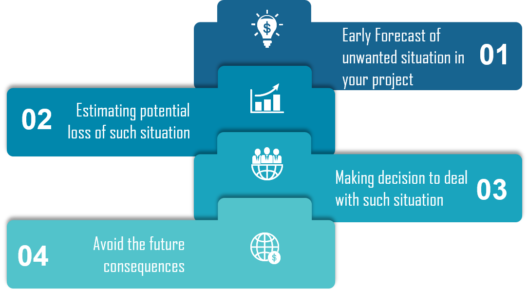Selenium Course
- 64k Enrolled Learners
- Weekend/Weekday
- Live Class
The probability of any unwanted incident is defined as Risk. In Software Testing, risk analysis is the process of identifying the risks in applications or software that you built and prioritizing them to test. After that, the process of assigning the level of risk is done. The categorization of the risks takes place, hence, the impact of the risk is calculated.
We will study this topic in detail. Before that, let me introduce you to our agenda for this blog:
We shall begin!
Moving on with this article on Risk Analysis in Software Testing.
In any software, using risk analysis at the beginning of a project highlights the potential problem areas. After knowing about the risk areas, it helps the developers and managers to mitigate the risks. When a test plan has been created, risks involved in testing the product are to be taken into consideration along with the possibility of the damage they may cause to your software along with solutions.
Now, you might think what could be the possible risks that you could encounter? Well here is a list:
Now, you must know there are certain risks that are unavoidable. I am enumerating them below:
The time that you allocated for testing
A defect leakage due to the complexity or size of the application
Urgency from the clients to deliver the project
Incomplete requirements
In such cases, you have to tackle the situation with care. Following points can be taken care of:
Conduct Risk Assessment review meeting
Use maximum resources to work on high-risk areas
Create a Risk Assessment database for future use
Identify and notice the risk magnitude indicators: high, medium, low.
Now, what are these risk magnitude indicators? Well, here is an explanation.
High: means the effect of the risk would be very high and non-tolerable. The company might face loss.
Medium: it is tolerable but not desirable. The company may suffer financially but there is a limited risk.
Low: it is tolerable. There lies little or no external exposure or no financial loss.
Moving on! Our next topic queued is as follows:
There are different sets of risks included in the risk identification process. Those are as follows:
Business Risks: This risk is the most common risk associated with our topic. It is the risk that may come from your company or your customer, not from your project.
Testing Risks: You should be well acquainted with the platform you are working on, along with the software testing tools being used.
Premature Release Risk: a fair amount of knowledge to analyze the risk associated with releasing unsatisfactory or untested software is required
Software Risks: You should be well versed with the risks associated with the software development process.
After identifying the risks associated with your software, the next step is to assess the risks; i.e, Risk Assessment.
In the risk analysis process, these steps prove to be the most important one. It is said that this step is way too complex and should be tackled with the utmost care. After risk identification, assessment has to be dealt programmatically. There are a few perspectives on risk assessment. Read on!

Moving on! Our next topic on Risk Analysis in Software Testing
There are three perspectives of Risk Assessment:
Effect
Cause
Likelihood
Effect – To assess risk by Effect. In case you identify a condition, event or action and try to determine its impact.
Cause – To assess risk by Cause is opposite of by Effect. Initialize scanning the problem and reach to the point that could be the most probable reason behind that.
Likelihood – To assess risk by Likelihood is to say that there is a probability that a requirement won’t be satisfied.
Now, heading forward, the question that would be hovering over your mind is, how actually shall we perform risk analysis? Well, here is your solution!
There are three steps:
Searching the risk
Analyzing the impact of each individual risk
Measures for the risk identified
With this I have reached towards the end of this blog, I hope that the content explained added value to your Java knowledge. We will keep exploring the Java world together. Stay tuned!
Now that you have understood testing, check out the Software Testing Fundamentals Course by Edureka, a trusted online learning company with a network of more than 250,000 satisfied learners spread across the globe. This course is designed to introduce you to the complete software testing life-cycle. You will be learning different levels of testing, test environment setup, test case design technique, test data creation, test execution, bug reporting, CI/CD pipeline in DevOps, and other essential concepts of software testing. Got a question for us? Please mention it in the comments section of “What is Software Testing” and we will get back to you.
Got a question for us? Please mention it in the comments section of this “Risk Analysis in Software Testing” blog and we will get back to you as soon as possible.
 Thank you for registering Join Edureka Meetup community for 100+ Free Webinars each month JOIN MEETUP GROUP
Thank you for registering Join Edureka Meetup community for 100+ Free Webinars each month JOIN MEETUP GROUPedureka.co